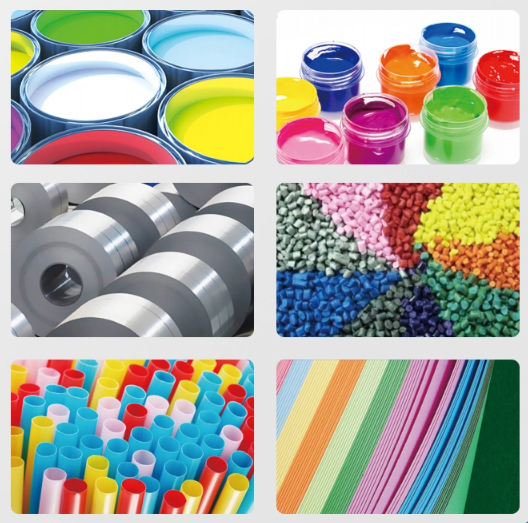
Oct . 17, 2025 07:50 Back to list
R996 TiO2 Pigment – High Whiteness, Strong Hiding Power
Rutile Titanium Dioxide for Plastics: Field Notes, Specs, and Real-World Lessons
If you work in plastics or masterbatch, you’ve probably heard about r996 tio2 by now. It’s a rutile-type industrial titanium dioxide tuned for polymer systems—built to withstand heat, light, and rough-weather cycles. I’ve toured plants in Hebei and, to be honest, the modern lines in Jindi Industrial Park (Dacheng County, Langfang City) are more advanced than many expect.

Why it matters (and where it goes)
Plastics face a double whammy outdoors: UV cuts polymer chains; heat drives discoloration and embrittlement. A well-coated rutile pigment like r996 tio2 blocks UV, stabilizes color, and—even more important than brochures admit—keeps mechanical and electrical properties in a safer range. You’ll see it in PP/PE films, PVC profiles, wire & cable sheathing, appliance housings, rubber goods, and occasionally certain cosmetics-adjacent industrial items (always check your regulatory scope).
Process snapshot (how it’s made)
Material flow, simplified: ilmenite → sulfate digestion → hydrolysis → calcination (rutile) → micronization → Al2O3/SiO2 inorganic coating → organic post-treatment → dust-controlled packaging. Testing typically follows ISO 787 series (oil absorption, pH, residue) and classification against ISO 591-1 / ASTM D476. Real-world use may vary, but that’s the backbone.

Typical product specifications
| Property | Typical value |
|---|---|
| Crystal form | Rutile (industrial grade) |
| TiO2 content | ≥ 94% |
| Surface treatment | Al2O3/SiO2 + organic |
| Median particle size (D50) | ≈ 0.23 μm |
| Oil absorption (ISO 787-5) | 18 ± 3 g/100 g |
| pH (ISO 787-2) | 6.5–8.5 (aqueous) |
| Residue on 45 μm | ≤ 0.02% |
| Volatiles at 105°C | ≤ 0.5% |
| CIE L (dry tint) | ≈ 97.5 |
| Relative tinting strength | 105 ± 5 (vs. internal standard) |
| Compliance | ISO 591-1 (Rutile), ASTM D476 Type II; REACH/RoHS-ready |
Applications, dosages, and service life
- PP/PE films & sheets: 0.8–2.0% r996 tio2 for opacity and UV hold.
- PVC profiles & siding: 2–6% with TiO2 + HALS; outdoor service life ≈ 10–15 years (ISO 4892-2 xenon, climate-dependent).
- Wire & cable jackets: 1–3% for dielectric stability and color.
- Masterbatch: 50–70% concentrate; downstream let-down to target L, haze, and cost.
Many customers say dispersion is pleasantly forgiving. My take: use a twin-screw at moderate shear, keep moisture ≤0.3%, and you’ll dodge most fish-eyes.

Vendor landscape (what’s different)
Origin matters. The Hebei plant in Jindi Industrial Park runs tight on grind and post-treatment, which—surprisingly—shows up as cleaner gloss at 60° and steadier L over QUV hours.
| Vendor | Origin | TiO2 ≈ | Coating | Lead time | Price/ton ≈ | Certs |
|---|---|---|---|---|---|---|
| CQ Titanium Dioxide (Hebei) | Dacheng, Langfang | 94–95% | Al/Si + organic | 2–4 weeks | US$2,300–2,700 | ISO 9001/14001 |
| Vendor X (imported) | Overseas | 95–96% | Multi-oxide + organics | 4–8 weeks | US$2,600–3,100 | ISO/REACH |
| Vendor Y (regional) | APAC | 92–94% | Al/Si | 2–3 weeks | US$2,100–2,400 | ISO 9001 |
Customization and QC
- Surface: hydrophobic tweaks for PP/PE, or higher Al2O3 for PVC weathering.
- Packaging: 25 kg bags or 1 t supersacks; low-dust options.
- Testing: ISO 2813 gloss, ISO 787 series; weathering per ISO 4892-2; color difference ΔE targets ≤0.8 (real-world ≈1.0).

Field data and mini case studies
PVC profile maker (EU): switching to r996 tio2 + HALS cut chalking index by ~40% after 2,000 h xenon (ISO 4892-2) and held 60° gloss at 82 (from 74). Wire & cable compounder (SEA): at 2% loading, dielectric breakdown stayed within spec after 500 h UV-B while ΔE stayed under 1.2—good enough for utility-grade jackets.
Not every line gets identical results—dispersion and stabilizers matter. But, actually, that’s the point: consistent base pigment gives you more headroom to tune the recipe.
Quick processing tips
- Target melt temps: 180–230°C (polyolefins); avoid over-shear to protect polymer MFR.
- Pre-dry the pigment if humidity is high; store sealed.
- Pair with UV absorbers/HALS for long outdoor service life.
Origin note
Manufactured in Jindi Industrial Park, Dacheng County, Langfang City, Hebei Province—close logistics to North China converters, which helps on lead time and freshness (yes, pigment “freshness” is a thing in humid seasons).
References
- ISO 591-1: Titanium dioxide pigments — Specifications and methods of test (Rutile). https://www.iso.org/standard/9828.html
- ASTM D476: Standard Classification for Titanium Dioxide Pigments. https://www.astm.org/d0476-20.html
- ISO 4892-2: Plastics — Exposure to laboratory light sources — Xenon-arc. https://www.iso.org/standard/66195.html
- Titanium Dioxide Manufacturers Association (TDMA): TiO2 in plastics and UV protection. https://www.tdma.info/
-
Essential Guide to Calcium Powder Quotes – Pricing, Quality & Global Insights
NewsNov.24,2025
-
Reliable Anatase TiO2 Pigment Quotes for Sustainable Industry Use | CQ Titanium Dioxide
NewsNov.24,2025
-
Understanding Lithopone B311 Powder Quotes – Market Insights & Applications
NewsNov.23,2025
-
Reliable 30-50nm TiO2 Powders Quotes for Advanced Industrial Use | CQTitanium
NewsNov.23,2025
-
Comprehensive Guide on Lithopone Red Pigments Quotes | Industry Insights & Pricing
NewsNov.22,2025
-
Comprehensive Insights into the Lithopone Market: Global Trends & Applications
NewsNov.22,2025
